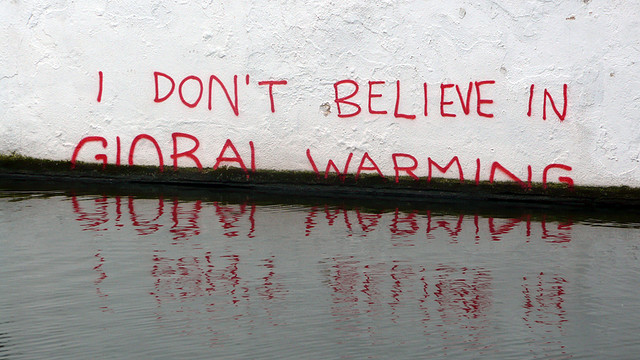Sealevel rises quicker than expected

Many coastal cities, as for example Tokyo, will have to find a way to cope with rising sealevels (CC BY 2.0: oisa/flickr.com)
At the Doha climate change conference, delegates of the COP18 again try to find a practical way how to (further) reduce greenhouse gas emissions. The importance of this goal was again highlighted by a new study released recently by the Potsdam Institute of Climate Impact Research (PIK): Researchers found out that sealevel rose much quicker than projected by the latest IPCC report.
That’s what they saw when comparing the model calculation with real satellite data from 1990 to 2011. According to those satellite measurements, oceans are rising 60 percent faster than previously thought. In absolute numbers: the IPCC report from 2007 projected additional 2 mm sealevel per year, satellite data revealt a rate of 3.2 mm per year.
Which might seem less in numbers, can make a huge difference in reality. Already for the projected 2 mm, researchers warned this might lead to flood waters, more extreme storms, and salted ground water. Yet, nobody can forecast what exactly is to happen with a higher rate of sealevel rise. But nonetheless, threat for coastlines and megacities continues to increase. Especially if no reliable mechanism will be found to reduce CO2 emissions – as in consequence sealevels will rise by several meters at the end of this century.
Climate Travel Guide to Qatar, COP18 in mind
Qatar is the first Middle East country to host a major UN climate change conference. Traditionally, host countries have a big responsibility – their diplomatic skills can make a conference outcome a fail or a success.
This year, the Qatari government has a lot on the plate: A new trading scheme for CO2 emissions has to be found. The old one, agreed in Kyoto in 1996, ends in just a few weeks with the beginning of the new year.
To get a better idea of the oil rich host country of this years Climate Summit, we put togethter some facts and figures for you:
Capital: Doha
Number of inhabtiants: 1.9 Million
Ethnicty: Arab 40%, Indian 18%, Pakistani 18%, Iranian 10%
Religion: Muslim 77.5%, Christian 8.5%, other 14%
Energy mix: 100% electricity from fossil fuels
CO2 emissions per capita: 40 tons per capita. That is the largest in the world.
Food and water resources: produces fruits, vegetables; poultry, dairy products, beef; fish, before Qatar became a big player in oil and gas it was a poor pearl fisher country
Industries: liquefied natural gas, oil production and refining, ammonia, fertilizers, petrochemicals, steel reinforcing bars, cement and others
Civil Society: mixed legal system of civil law and Islamic law
Qatar is probably not the first place you have in mind for a climate conference. We also thought about it and came up with this little information film about the sense or non-sense of climate conferences like COP18:
What a +4° Celsius world would look like
 The next climate conference is to start in Doha, Quatar this Monday – but already before it is started, participating parties are not really optimistic about a practical outcome.
The next climate conference is to start in Doha, Quatar this Monday – but already before it is started, participating parties are not really optimistic about a practical outcome.
This is especially striking when set into relation with the urgence of the world’s situation: First opinions come up claiming [german languange link] that it is not realistic anymore to limit global warming to plus two degree Celsius when compared to predindustrial level.
In this context, the World Bank released a new report last week. Written by the Potsdam Institute of climate change, they again outline what is to happen with the worlds (eco)systems in a +2 degree-world – and forecast what is to happen in a +4-degree world.
Put in simple matters: Consequences of additional four degrees won’t just be an extension of what is felt at two degrees. Naively one could guess that as temperature doubles from two to four degrees, effects “double” as well. But that is not the case. They amplify even more intense.
To give you an impression of what to expect in a +4 degree world, we have summarized the most important facts.
![]() read more
read more








Feedback